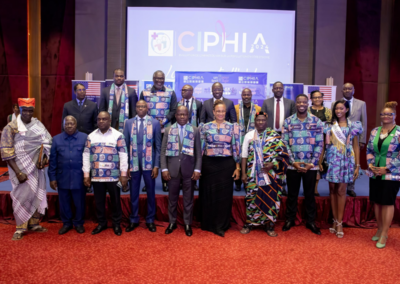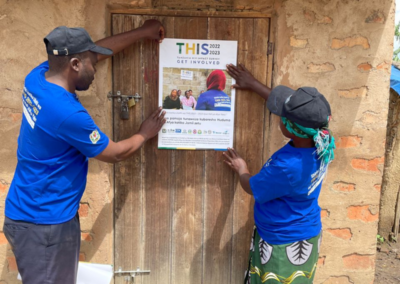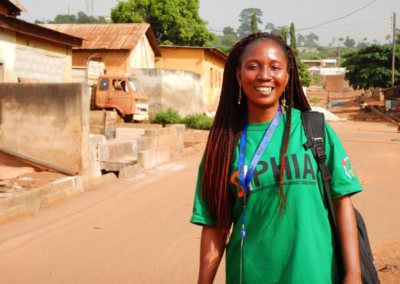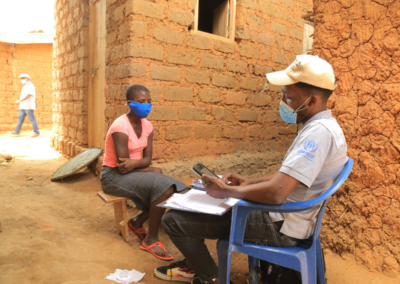On July 1, ICAP at Columbia University, the U.S. Centers for Disease Control and Prevention (CDC), and representatives from the governments of Malawi and Rwanda, participated in a webinar featuring the Population-based HIV Impact Assessment (PHIA) project and how it provides critical information on the current HIV epidemic and informs the way forward.
The webinar, “Population Surveys: Measuring and Informing the HIV Response,” was held in conjunction with the launch of the Journal of Acquired Immune Deficiency Syndromes (JAIDS) supplement which features 13 articles on how the PHIA surveys, between 2015-2019, were conducted and some of its key findings. The PHIA project is funded by the U.S. President’s Emergency Plan for AIDS Relief (PEPFAR) through CDC.
Jessica Justman, MD, ICAP’s senior technical director, began the webinar with an overview of the surveys and how they have shaped the national HIV responses of 15 countries thus far.
“The articles in this supplement tell a really important public health story. They describe how, in fact, it was possible to conduct HIV testing in the home and return the results, with counseling, and refer HIV-positive individuals to care,” said Justman. “I think the most inspiring part of this story is in the results of the surveys. We found that the majority of HIV-positive individuals who knew their status were on effective treatment and had suppressed viral loads. This meant that many countries were much closer to achieving their 90-90-90 targets by 2020 than had been expected – and that was really terrific.”
During the introduction, Ambassador Birx, MD, former U.S. Global AIDS Coordinator shared special remarks to outline four key reasons why the PHIA surveys are important in defining the future of the HIV response.
“[The PHIA surveys] ensured that the programs like the Global Fund, PEPFAR, the host governments and communities were all looking and utilizing the same data to really understand the programs in their countries by age, sex, and location,” said Birx. “That really helped moving funds within a country to address the gaps, but it took all of us working together, in partnership, and using the data for decision-making.”
The webinar featured detailed presentations on several of the supplement articles including PHIA survey methodology, men and the 1st 90, and population viral load and viral load suppression at the enumeration area level. Panelists from the governments of Malawi, Rwanda, and ICAP’s community mobilization team discussed how each country benefited from their PHIA surveys and the critical role of engaging and involving communities to participate in the surveys.
Overall, as summarized by Drew Voetsch, PhD, team lead, general population surveillance team, division of global HIV & TB, CDC, the session highlighted the importance of these surveys in measuring progress towards the UNAIDS 90-90-90 targets – which were met in Eswatini, Namibia, and Rwanda – and improvements in countries which held repeat PHIA surveys, including Eswatini, Lesotho, and Zimbabwe.
However, there remained gaps by age, sex, and region in each country. For example, men were less likely to be aware of their HIV status and young people, under 25 years of age, were less likely to know their HIV status and have viral load suppression if they were living with HIV. Being the first-ever HIV population surveys to return HIV results immediately and viral load results within weeks, the PHIA surveys also made programmatic contributions in addition to their surveillance role. Of the estimated 24,000 individuals who tested positive during the surveys, over 5,000 were newly diagnosed and linked to treatment.
“Population surveys are critically important, particularly at this point in the HIV epidemic. There have been several decades of enormous work by so many people around the world to confront this epidemic and it’s really important to measure to where we are at today,” said Wafaa El-Sadr, MD, MPH, MPA, ICAP’s global director. “Because knowing what we have achieved and what we still need to achieve is going to inform what we do in terms of continuing to confront this epidemic.”
To access the PHIA JAIDS supplement, click here. To learn more about the PHIA project, visit the PHIA website.










